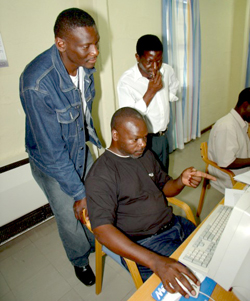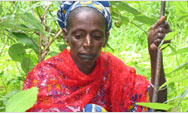You are here » Home » Telling Our Story
Success Story
Timely data collection and reporting helps improve education
Better Data Improves School Planning

| |
Photo: EQUIP/Drake Warrick
|
|
Zambian Education Ministry staff train in statistical data analysis.
USAID is helping Zambia improve management of data on education and schooling, enabling the government to better gauge the nation’s educational needs.
|
Maintaining accurate data on Zambia’s education system has been a major challenge for a long time. With the high turnover of teachers due to the HIV/AIDS epidemic and other social and economic factors, Zambia’s Education Ministry has been grappling with the problem of gathering reliable and accurate statistics as a way of improving educational standards on a national level. USAID is helping to improve data collection and reporting as the country works to provide better educational opportunities for its citizens.
Since 2002, Zambia’s Education Ministry has been working hard to integrate advanced information technology into its data management, dissemination, and utilization systems. The ability to tap into timely and accurate data helps the ministry respond better to educational needs. With help from USAID, the ministry has designed a cohesive, high-quality process for collecting, cleaning, and disseminating school data. Now the ministry is making this data available through a software program that allows users to generate standard reports based on specified criteria. In 2004, the Ministry produced the country’s first educational statistical bulletin in 10 years.
With the new system, data are routinely gathered from nearly all public schools as well as most private, community, and distance education schools. The data are copied regularly onto discs and distributed in both soft- and hard-copy formats, ensuring that even non-computer users can use the data.
Access to the data has started changing the way the ministry plans its budget and prioritizes spending — the data are regularly used in national planning exercises to project trends and calculate teacher loads and unit costs.
Some school districts have been so impressed by the results that they have taken the initiative to independently and systematically gather more in-depth data from schools in their jurisdiction on a regular basis. USAID’s partnership with the Education Ministry is creating an environment where the government, schools, and administrators are working together to improve educational planning and quality.
Print-friendly version of this page (386kb - PDF)
Click here for high-res photo
Back to Top ^ | 

